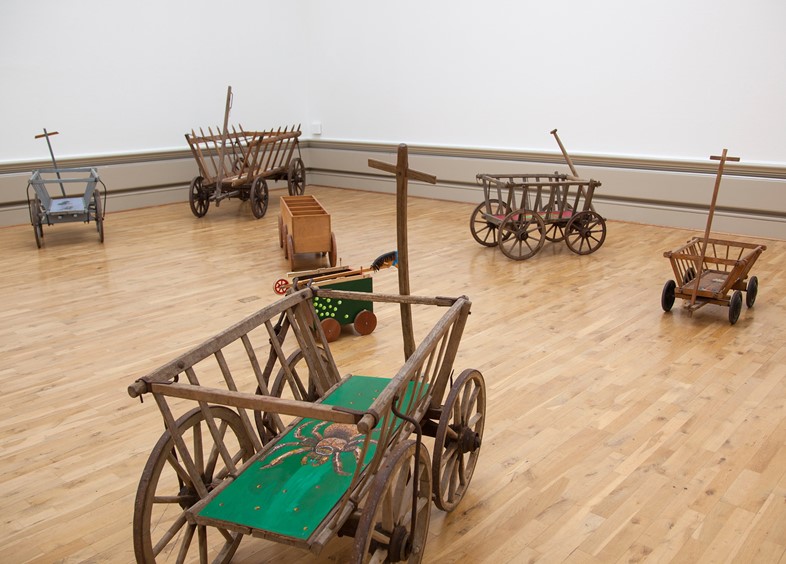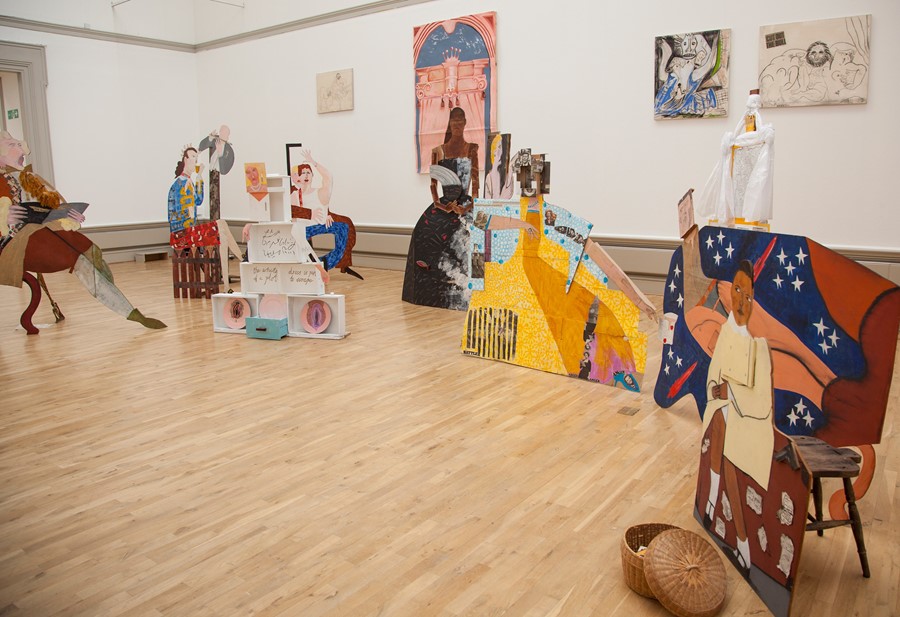Lubaina Himid’s 2017 victory has seen her invited to show in exhibitions around the world – but for this one, you’ll have to go to her, she tells AnOther
“Rather than it sitting around in my house and reminding me of my misspent youth, I thought it might be better as a shared resource,” says the artist Lubaina Himid. She’s referring to Making Histories Visible, a research project predominantly made up of exhibition ephemera from her own collection, which charts the influence of black visual art on the cultural landscape from the early 1980s until the present. Although it has since expanded to include artists of the black diaspora, first and foremost the archive attempts to make visible the contributions of black British artists, such as Claudette Johnson and Sonia Boyce, who “influenced an awful lot between the 1980s and now” but never received the publicity and commercial success that they deserved.
It might have taken 30 years longer than they had hoped, but this “black British moment” is finally getting some well-earned institutional recognition. In early 2017, Nottingham Contemporary staged The Place is Here a sweeping survey on black British artists working in the 80s, which featured Himid’s 1986 installation A Fashionable Marriage – a retelling of William Hogarth’s satirical painting Marriage A-la-Mode (1735-45). She also showed the piece, which is made from a collection of her characteristic plywood cutouts, when she was nominated for, and subsequently won, the 2017 Turner Prize.
Now, demand for the 63-year-old painter has never been higher. She is ending a three-part exhibition series at the Harris Museum in Preston this March with the retrospective Lubaina Himid: Hard Times, which she says will feature “an assortment of work around slavery and identity”. After shows at Spike Island in Bristol and Modern Art Oxford, this retrospective is a homecoming for Himid, who has lived and taught in Preston for almost half of her life. Ahead of the opening, we speak to the Zanzibar-born artist about her hope for the younger generation, her affinity to George Clooney and why we should all be angry.

On her Harris Museum exhibition…
“I’m going to be inviting quite a lot of black artists that I know to talk about their own work and the work [in the exhibition]. We’re quite interested now in talking not only about education – what it’s like to be black in arts education – but also we haven’t had that many questions in the last 30 or 40 years about the actual work itself. Sometimes, we corner ourselves into a position where we’re talking about the issues, but quite often we’re cornered into that. I think there’s space and time now to actually talk about how the work is made.”
On working as an artist outside of London…
“I’ve made every curator since 1990 come to Preston. I made Vogue, Harpers Bazaar, the BBC and everyone come. I’m not ashamed of [living here], but it’s true that I had the advantage of being born somewhere exotic. You can say born in Zanzibar and lives in Preston and that’s kind of funny. It’s an interesting little city. I still sound like I’m from London, but I feel I belong, and I have to say that people here, people I don’t know at all, are perfectly OK with that.”
On the public’s reaction to her Turner Prize win...
“From the very day of the nominations to this morning, I would say every single day, someone has come up to me in the street, or in the shop, or in a station, or in a cab and said, ‘I’m really pleased you got nominated.’ I know what it feels like to be George Clooney now! And all of the responses have been good. No one has said, ‘what’s that about?’”
On the younger generation...
“If I hadn’t have made connections with younger artists then I would have had to give up. Artists like Evan Ifekoya and Larry Achiampong have an absolute understanding of what we were trying to do in the 80s, but they’re not even 30. They have a great understanding, an incredible energy and of course are working with technology in the way that we didn’t, so they are able to network, travel and communicate in a way that we didn’t. I sound like a granny, but I am old enough to be some people’s granny!”
On curating women-only exhibitions…
“In the 1980s it was absolutely necessary because the black women artists were – ever so slightly – being marginalised by group shows. I saw it as being a necessary strategy then, but I think partly the failure of the strategy is that you have then boxed yourself into a corner and it takes longer to dig yourself out. It depends what you want for the work. If you have something in you that wants to inspire young women then it has its advantages. They want to see work by women, and it’s an easier way to find it. But I think by now we need to be much more vociferously appalled by the state of things and continuously point out that if there is a show of 37 men then there really aught to be 17 women in there, that there is enough work of a high quality for there to be an interesting dialogue to be going on. [We need] to insist, insist and insist.”
Lubaina Himid: Hard Times is at Harris Museum and Art Gallery, Preston, until June 3, 2018.
